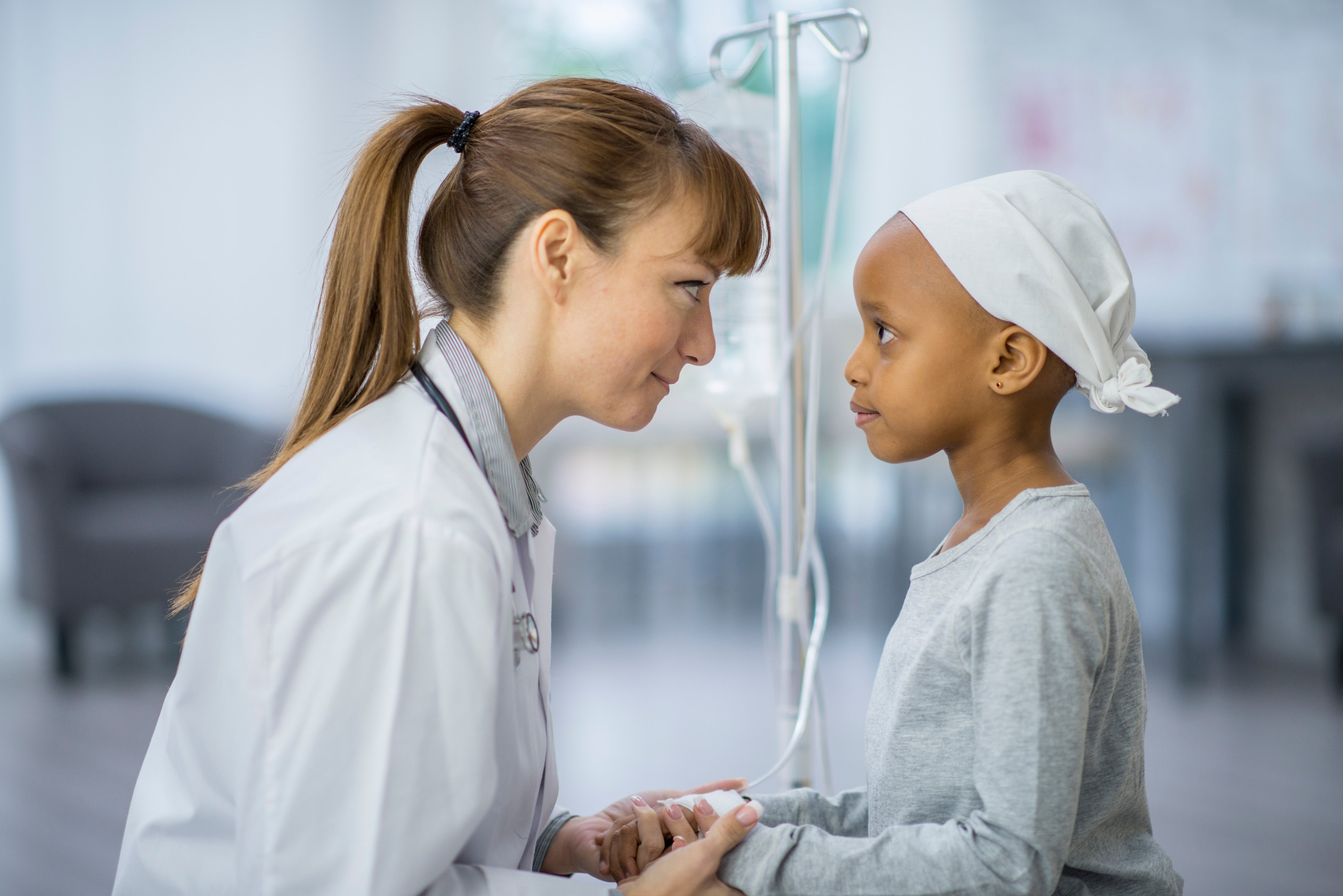After carrying out all the necessary tests, doctors will have a better understanding of your child’s diagnosis. You will then meet with some members of the primary treatment team. The primary treatment team will include a paediatric oncologist, a contact nurse, a social worker, and in some cases, an oncology fellow. During the meeting, they will explain which doctor is responsible for your child’s treatment, and the roles of everyone on the team. There may be other doctors that participate in the care of your child, but you will always have one physician who is most responsible for the care of your child.
The doctor will explain the type of leukemia your child has, based on what the team has learned through diagnostic testing. You will learn the expected outcome and effect the leukemia will have on your child in the upcoming months and years, based on what is known about the type of leukemia. This is called the prognosis.
The doctor will talk to you about placing your child on a protocol, which is a treatment plan for a particular cancer. Your child’s protocol depends on the type and subtype of leukemia as well as particular risk factors.
What is the purpose of treatment?
Treating ALL and AML aims to bring your child into remission. Your child is in remission when chemotherapy kills most of the leukemic cells in the bone marrow. When this happens, the body starts to produce normal blood cells. Your child receives more treatment after remission to completely kill the disease.
There are three main types of treatment for leukemia:
- chemotherapy
- radiation
- bone marrow transplants (BMT).
All children with leukemia are treated with chemotherapy. Some children may also receive either radiation, BMT, or a combination of both.
Participating in clinical trials
Your child’s doctor may ask if you would like your child to participate in a clinical trial, which is a structured research study.
Research is necessary to improve the success of treatments. Consider the case of childhood leukemia as an example of the dramatic impact of research. When children were diagnosed with leukemia in the early 1960s, it was highly unlikely that they would survive. Today, for some types of leukemia, the vast majority of children will survive the disease. This dramatic improvement has been achieved due to research in clinical trials. Each time a trial showed an improvement with a new type of treatment, treatment advanced and was able to benefit more children with leukemia.
Researchers have developed international groups to coordinate these trials. In North America, the main organization that develops clinical trials for children is the Children’s Oncology Group (COG).
Other available resources
The treatment team will also tell you about resources available to support your child, you, and your other children during treatment and recovery. Talk to your child’s doctor about any questions concerning the diagnosis and the treatment plan.
